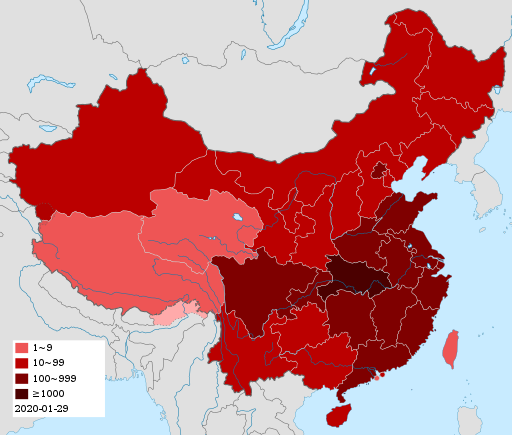The recent outbreak of novel coronavirus, known as 2019-nCoV, originated from China, has driven enormous public attention. So far, according to the World Health Organization (WHO), there are approximately 4593 confirmed cases of coronavirus globally and 106 deaths (1). The overall situation regarding the coronavirus spread is fluid. Considering its high level of infectivity and virulence capacity that ranges from 1.4 to 3.8 (2), this recent coronavirus outbreak could bring serious havoc on public health. If the situation continues, the stock market, which is deeply interlinked with China, can fall further. As we are lagging in identifying possible sources, and the nature of its transmission of this coronavirus, the latest advancement of their discovery will be a milestone in global health.
People all over the world are interested to know about the current progression of diseases and the novel coronavirus. There is no denying the fact that social media, a prominent global community of 2.6 billion people (3), could play a pivotal role in crisis moments relying on their peer-to-peer networks (4). There is a ton of information available on social media to entertain our thirst for the Wuhan Coronavirus. People can use social media to express their concern and to acquaint themselves with up-to-date information. For example, WHO, Wuhan Municipal Health Commission, and the Chinese Centers for Disease Control and Prevention (CDC) use their social media platforms for providing regular updates (5). However, several other Facebook and Twittter pages also share posts related to signs, symptoms, source identification, and route of transmission of this novel coronavirus.

In this instance, there should be some regulatory authority to control the posting of fabricated data about coronavirus. They can use tools such as data mining or labeling as a verified post, in social media. Without this sort of accountability, social media may fail to keep trust as a legitimate friend to give us advice related to a potential public health emergency. Perhaps, it is better avoiding those posts that emerged in social media or verifying those with some statutory sources.
About the Authors:
Dr Zubair Ahmed Ratan, MBBS, is a PhD student in the School of Health and Society, University of Wollongong, Australia. He is currently working on smartphone addiction projects.
Dr Hassan Hosseinzadeh, PhD, is a Senior lecturer and Academic Program Director of Master of Public Health & Master of Public Health Advanced in the School of Health and Society, University of Wollongong, New South Wales. He has special interests in health behaviour change, chronic disease, sexual health including HIV/AIDS, health literacy and primary care.
Dr Sojib Bin Zaman, MBBS, is a PhD student at the Department of Medicine, School of Clinical Sciences at Monash Health, Monash University, Melbourne, Australia. His research interest includes: communicable and non-communicable diseases, health informatics and health systems research
Competing interest
The authors declare that there is no conflict of interest.
Acknowledgement
Sojib Bin Zaman is supported by the “Australian Government Research Training Program (RTP) Scholarship.
References
- World Health Organization. Novel Coronavirus (2019-nCoV). https://www.who.int/emergencies/diseases/novel-coronavirus-2019
- ScienceNews. How the new coronavirus stacks up against SARS and MERS. https://wwwsciencenewsorg/article/how-new-wuhan-coronavirus-stacks-up-against-sars-mers. 2020.
- Statista. Number of social network users worldwide from 2010 to 2021 https://wwwstatistacom/statistics/278414/number-of-worldwide-social-network-users/. 2019.
- Keim ME, Noji EJAjodm. Emergent use of social media: a new age of opportunity for disaster resilience. 2011;6:47-54.
- Gralinski LE, Menachery VDJV. Return of the Coronavirus: 2019-nCoV. 2020;12:135.
- SBSNews. Authorities warn of fake coronavirus news on social media as outbreak spreads. https://wwwsbscomau/news/authorities-warn-of-fake-coronavirus-news-on-social-media-as-outbreak-spreads . 2020.
- Australia BI. A viral pandemic could kill 65 million people. https://wwwbusinessinsidercomau/scientist-simulated-coronavirus-pandemic-deaths-2020-1.